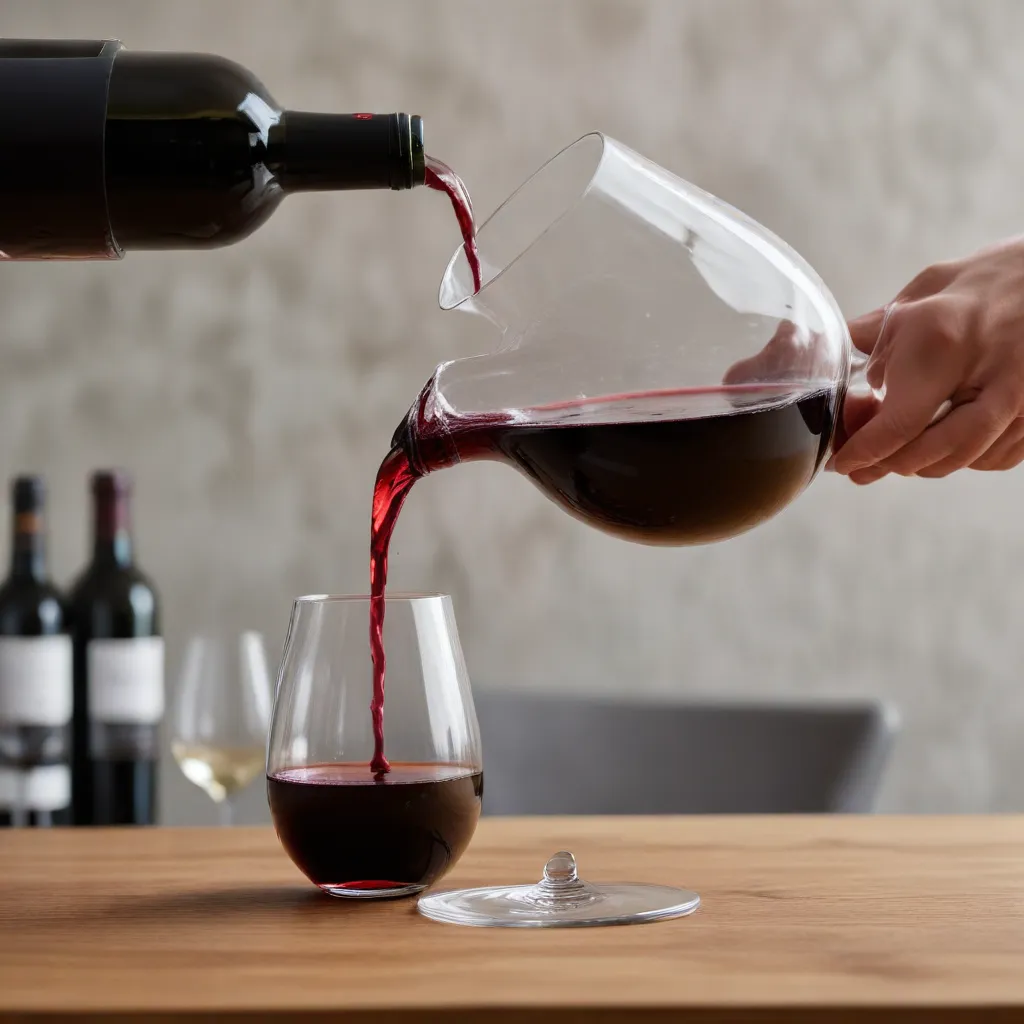
When you pour a glass of your favorite vintage, the true magic of the wine lies not just in the liquid itself, but in the ritual that precedes it. Introducing oxygen to your wine through the art of decanting can be the decisive step in unlocking its full aromatic and flavor profile. At Wine Garden Inn, we believe that mastering the art of decanting is a crucial skill for any wine enthusiast, as it allows you to elevate your tasting experience and truly appreciate the nuanced complexities of each bottle.
The Importance of Decanting
Decanting, the simple act of transferring wine from its bottle to a separate vessel, serves two primary purposes: removing sediment and aeration. As a wine ages, it naturally develops a fine, powdery sediment that can detract from the clarity and smoothness of the pour. By carefully decanting the wine, you can leave this sediment behind, ensuring a clean, unobstructed sip.
Equally important is the role of aeration. Exposure to oxygen triggers a chemical reaction known as oxidation, which softens the wine’s tannins and allows its aromatic compounds to blossom. This process can transform even the most robust, tannic red wines, smoothing out their harsh edges and revealing a symphony of flavors and fragrances that may have been previously subdued.
Decanting Techniques
The art of decanting is not a one-size-fits-all approach. The technique you employ will depend on the specific wine you’re working with, as well as your personal preferences. For younger, more tannic wines, a slow and steady decanting process is often recommended. Gently pouring the wine into the decanter allows it to gradually interact with the air, coaxing out its full potential.
On the other hand, mature wines that have developed significant sediment may benefit from a more rapid decanting technique. By quickly pouring the wine into the decanter, you can separate the clear liquid from the unwanted sediment more effectively.
The choice of glassware is also an important consideration. While traditional decanters with wide bases and large surface areas are excellent for aeration, you can also experiment with more specialized vessels, such as aerating decanters equipped with built-in swirling mechanisms to accelerate the oxygenation process.
The Benefits of Decanting
By mastering the art of decanting, you’ll unlock a world of sensory delights. As the wine mingles with air, its hidden complexities will begin to reveal themselves, from the vibrant aromas that dance on the nose to the velvety texture that caresses the palate.
For older, more mature wines, decanting is particularly crucial. These wines have spent years developing their character, and the process of decanting can help to preserve and amplify their nuanced flavors. By removing the sediment and allowing the wine to breathe, you’ll be able to fully appreciate the depth and sophistication that comes with age.
Even younger, more approachable wines can benefit from a stint in the decanter. The aeration process can soften the edges of robust tannins, creating a more harmonious and balanced drinking experience. Whether you’re savoring a bold Cabernet Sauvignon or a delicate Pinot Noir, the decanter can be the key to unlocking the wine’s full potential.
Decanting Etiquette
When it comes to decanting, timing is everything. The recommended decanting time can vary depending on the wine’s age, structure, and personal preference. As a general guideline, younger, more tannic wines may benefit from 30 minutes to an hour of decanting, while older, more fragile wines may only need 15-20 minutes to reach their optimal expression.
Presentation is also an important aspect of the decanting ritual. Serving your wine from a beautifully crafted decanter adds an elegant touch to any occasion, whether you’re hosting a formal dinner party or enjoying a cozy night in. By considering the wine’s pairing with your meal, you can create a harmonious dining experience that celebrates the synergy between food and wine.
Decanting for Different Wine Types
The art of decanting is not limited to red wines; it can also be a valuable tool for enhancing the enjoyment of white wines. While the traditional decanting process is often associated with robust, tannic reds, fuller-bodied white wines can also benefit from a brief stint in the decanter. The aeration process can help to unlock the wine’s aromatic potential, revealing layers of complexity that may have been previously obscured.
When it comes to red wines, the decision to decant often depends on the wine’s age and tannin structure. Older, more mature reds with significant sediment will almost always benefit from decanting, as it separates the clear liquid from the unwanted particles. Younger, more tannic reds, such as those found in the heart of Tuscany, can also be transformed by the decanting process, with the aeration softening the wine’s edges and allowing its fruit-forward flavors to shine.
Conclusion
Mastering the art of decanting is a transformative journey that can elevate your wine-drinking experience to new heights. Whether you’re savoring a bottle from our very own Wine Garden Inn vineyard or exploring the world-class wines of Tuscany, the ritual of decanting can be the key to unlocking a wine’s full potential.
By understanding the science behind this time-honored practice and experimenting with different techniques, you’ll develop a deeper appreciation for the complexities of your favorite vintages. So, the next time you reach for a cherished bottle, consider the power of the decanter and let it be your guide to a truly exceptional wine-tasting journey.
